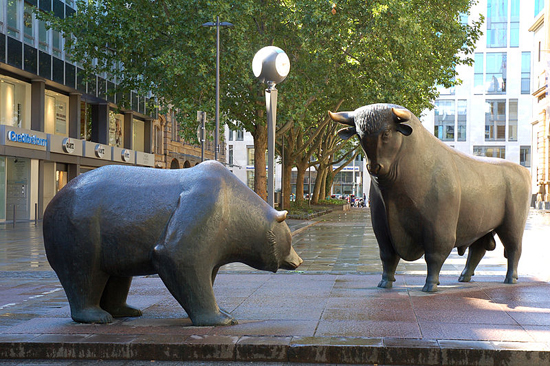Introduction to Investment
Types of Stock and Bond Brokerages, Risk vs Return, and More
© 2012 Kelly Smith; all rights reserved; content may not be copied, rewritten, or republished without author’s written permission; Author’s Google profile; Posted Dec 24, 2012


Standard Disclaimer—The author is not a finance professional and this article is intended as educational material gained from 20 years of stock market investing. It is not intended as advice.
Many people still look at investment as an pastime that only the rich such as Warren Buffett engage in. And perhaps that was true in the past, but no longer. There has been a shift over time from pensions to self-directed retirement plans like the 401K.
These are highly managed plans; you look over a menu of funds and choose an assortment of funds, hopefully after doing some research. Some funds are primarily domestic, some are emerging markets, some are bonds—it goes on and on.
Risk vs Return
As a general rule, funds and individual stock and bond returns
range from high risk/high return to low risk/low return. Which is right for you? One of the most important factors to consider is how many years you are from retirement.
The most common strategy is to start with high risk when you are young and rebalance your portfolio (collection of investments taken as a whole), annually so that you are taking less risk as you approach your golden years.
Should I Buy Stocks or Bonds?
The most common approach is to own both; the ratio is up to you. Bonds tend to less volatile than stocks, yielding less return than stocks. But generally, when stocks are doing well, bonds perform less well and vice versa.
Taking this approach has the tendency to smooth out the value of your portfolio out, whether we are experiencing either a bull or a bear market. A bull market is trending upward (when you can make a lot of money in stocks). A bear market is just the opposite. See the logic here?
When the conditions were right I began buying Blackrock Municipal Income Fund and I have done quite well with it. What made it so attractive? It is very stable, and of course, tax-free.
Have you ever voted on a “bond issue” in your community to build a new school or library? Your city or county borrowed the money from a municipal bond fund and you paid it back with your taxes over time. It’s kind of like financing a car.
How Much Time are You Willing to Spend on Portfolio Management?
Investors range from the timid and/or time-challenged to the type that wants to be in total control. If you are the first type then you might stick with a completely managed portfolio, like the 401K that your employer might offer.
Keep in mind that you will be swapping convenience for potentially high management fees. Another strategy is to establish a personal account with a brokerage firm like JP Morgan Asset Management. This is also a managed fund that gives you more control.
But you will still be paying for personal attention and remember that your broker is possibly more motivated by his commissions than with your profitability.
Invest on a Shoestring with a DRIP Fund
This is one of my favorites. When I first began researching, I didn’t have much disposable income but I was eager to get started. DRIP funds (Dividend Reinvestment Plans) have several advantages.
First, they are affordable. Brokerages like Buy and Hold charge less than $10 dollars a month for 2 trades. Unlike other types of brokerages, with this approach you can buy a percentage of a single stock.
For example, if you want to buy into a stock that is trading for $60 dollars per share and want to get in because it is going up, but only have $40 in your budget, you can buy a percentage of that one share.
When your positions (individual companies you own) pay a dividend, Buy and Hold automatically uses it to purchase yet more shares and credits your account automatically. It is a frills-free brokerage so you must do your own research.
Play the Market like a Pro
Finally, we have on-line brokerages like TD Ameritrade. You pay for individual trades, but again, you must do all your research.
One good thing is that their on-line tools are extensive. You can drill way, way down when you are analyzing a potential buy. You can trade options. You can choose from a full line of trade options like market, stop market, limit, stop limit, and more.
I hope you found something good to take away from this article. Come back soon as I will be posting more in-depth material.
Do you have any investing tips that have worked well for you? Feel free to share them with our readers in the comment section below.
Related Articles Others are Reading:
- Investing in Enviro-Friendly Funds
- Innovative Ways to Grow a Greener Business
- Popular Eco-Friendly Businesses 10 Steps to Make Your Money Last a Lifetime
- Can You Get a Better Home Price with Environmentally Friendly Financing?
- How to Start Saving for Your Future Expenses
Add a Comment:
Website © 2012 KSmith Media, LLC; all rights reserved; content may not be copied, rewritten, or republished without written permission.
